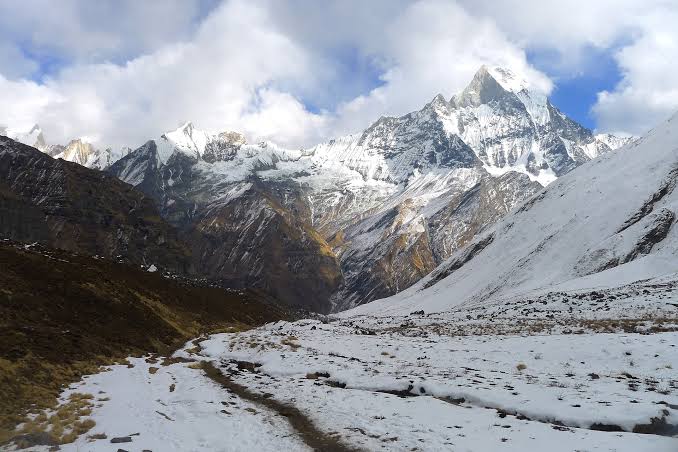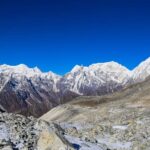When it comes to trekking in Nepal, two of the most popular and iconic regions are the Everest Region and the Annapurna Region. Both offer breathtaking landscapes, rich cultural experiences, and a range of trekking options, but they cater to different preferences and trekking styles. Deciding which region to explore can be challenging, especially for those planning their first trek in Nepal. This article will provide an overview of each region and discuss the pros and cons of trekking in the Everest and Annapurna regions.
Overview
Everest Region Treks and Annapurna Region Treks are renowned for their stunning views, diverse terrains, and cultural richness. The Everest Region, home to the world’s highest peak, offers treks like the Everest Base Camp Trek and the Everest Three Passes Trek. On the other hand, the Annapurna Region is known for treks such as the Annapurna Circuit Trek and the Annapurna Base Camp Trek. Each region provides a unique trekking experience shaped by its geographical features, cultural influences, and logistical considerations.
Pros and Cons of Everest Region Treks
Pros
Iconic Views and Peaks
The Everest region is famous for its stunning vistas of the world’s highest peaks, including Mount Everest, Lhotse, and Nuptse. Trekkers are rewarded with unparalleled views of these towering giants, especially from viewpoints like Kala Patthar.
Rich Sherpa Culture
The Sherpa people inhabited the region and were known for their hospitality and unique cultural heritage. Trekking here allows one to experience Sherpa culture, visit traditional monasteries, and interact with local communities.
Famous Treks
The Everest Base Camp Trek is one of the most famous treks in the world, attracting adventurers seeking to stand at the foot of the world’s tallest mountain. The region also offers challenging treks like the Everest Three Passes Trek for more experienced trekkers.
Good Infrastructure
Everest Region The Everest region has a well-developed trekking infrastructure, including numerous lodges, teahouses, and medical facilities. This makes it relatively accessible for trekkers, even those less experienced.
Cons
Altitude Challenges
The high altitude of the Everest region poses significant challenges. The trek reaches altitudes of over 5,000 meters (16,400 feet) at Everest Base Camp. The risk of altitude sickness is higher, and proper acclimatization is crucial.
Crowds
Due to its popularity, the Everest Base Camp Trek can be crowded, especially during peak seasons. This can lead to a less serene experience and increased competition for accommodations.
Higher Costs
Trekking in the Everest region can be more expensive than in other regions. Costs for permits, flights to Lukla, and guided tours can add up, making it a pricier option.
Weather Conditions
The weather in the Everest region can be unpredictable, with cold temperatures, strong winds, and potential snowfall. This can make trekking conditions more challenging, particularly in the shoulder seasons.
Pros and Cons of Annapurna Region Treks
Pros
Diverse Landscapes
The Annapurna region offers diverse landscapes, from lush subtropical forests to arid high-altitude deserts. Trekkers can experience a variety of terrains and ecosystems, including the iconic Thorong La Pass.
Cultural Diversity
The Annapurna region has various ethnic groups, including the Gurung, Magar, and Thakali people. This cultural diversity is reflected in the local customs, festivals, and traditions, providing a rich cultural experience.
Less Crowded
The Annapurna region generally sees fewer trekkers than the Everest region, especially on routes like the Annapurna Circuit and the Mardi Himal Trek. This allows for a more tranquil trekking experience.
Varied Trekking Options
The region offers a range of trekking options suitable for different skill levels and interests. From the challenging Annapurna Circuit Trek to the more accessible Annapurna Base Camp Trek, there’s something for everyone.
Cons
Longer Treks
Some treks in the Annapurna region, such as the Annapurna Circuit Trek, are longer and can take up to 15-20 days to complete. This requires more time and commitment from trekkers.
Weather Variability
The weather in the Annapurna region can be unpredictable, with heavy rainfall and snowfall potential, particularly during the monsoon and winter seasons. This can impact trekking conditions and accessibility.
Basic Facilities in Remote Areas
While the Annapurna region has a range of teahouses and lodges, facilities can be more basic in remote areas. Trekkers may need to be prepared for simpler accommodations and fewer amenities.
Permit Cost
The Annapurna region requires several permits, including the Annapurna Conservation Area Permit (ACAP) and the Trekkers’ Information Management System (TIMS) card, which increase the cost of the trek.
Factors to Consider When Choosing Between the Everest and Annapurna Regions
When deciding between trekking in the Everest Region or the Annapurna Region, there are several key factors to consider to ensure that your trekking experience aligns with your preferences, fitness level, and logistical requirements. Here’s a detailed look at the main considerations to help you make an informed choice:
Personal Preferences
Views, Cultural Experiences, and Trek Length
Views: The Everest Region might be more appealing if your primary goal is to witness the world’s highest peaks and experience iconic Himalayan vistas. Treks like the Everest Base Camp Trek offer breathtaking views of Mount Everest, Lhotse, and Nuptse, particularly from viewpoints like Kala Patthar. On the other hand, the Annapurna Region is renowned for its diverse landscapes, ranging from lush forests to high-altitude deserts, with spectacular views of the Annapurna massif and Dhaulagiri. The Annapurna treks might be more satisfying if you prefer varied scenery and a chance to experience different ecological zones.
Cultural Experiences: The Everest Region provides a deep dive into Sherpa culture, with opportunities to visit traditional monasteries, such as Tengboche Monastery, and interact with the Sherpa community. The Annapurna Region, however, offers a broader cultural tapestry with its mix of ethnic groups like the Gurung, Magar, and Thakali. Each group has its own distinct traditions, festivals, and culinary delights, making the Annapurna treks rich in cultural experiences as well.
Trek Length: Consider how much time you can dedicate to your trek. The Annapurna Circuit Trek, for example, is a longer trek that can take 15-20 days to complete, while the Annapurna Base Camp Trek is shorter, typically requiring 7-12 days. In contrast, the Everest Base Camp Trek usually takes around 12-16 days, and the Everest Three Passes Trek can extend up to 18-21 days. Your choice might depend on whether you prefer a shorter trek with less time commitment or a longer, more immersive experience.
Physical Fitness and Experience
Matching Trek Difficulty with Fitness Levels
Everest Region: Trekking in the Everest Region often involves high altitudes and challenging terrain. While not technically difficult, the Everest Base Camp Trek reaches altitudes over 5,000 meters (16,400 feet), which can pose risks of altitude sickness. Proper acclimatization is essential; trekkers should be prepared for potential physical strain. The Everest Three Passes Trek is even more demanding, requiring a higher fitness level and experience due to the extreme altitudes and rugged paths.
Annapurna Region: The Annapurna Region offers a range of trek difficulties. The Annapurna Base Camp Trek is considered moderately suitable for those with average fitness levels, as it doesn’t reach altitudes as high as those in the Everest Region. However, the Annapurna Circuit Trek is more strenuous and challenging due to its length and the crossing of the Thorong La Pass at 5,416 meters (17,769 feet). Beginners or those with less trekking experience might prefer shorter and less demanding treks like the Mardi Himal Trek in this region.
Logistical Considerations
Cost, Duration, and Seasonal Factors
Cost: Trekking in the Everest Region generally involves higher costs. The price includes flights to Lukla, which are more expensive than overland transport options. Additionally, the Everest Region requires specific permits and often more guided support, contributing to higher overall expenses. The Annapurna Region is relatively more affordable, with lower costs for permits and overland transport options such as buses or jeeps to the trailheads.
Duration: Trek duration varies between regions. The Everest Base Camp Trek typically takes 12-16 days, while the Annapurna Circuit Trek can take up to 20 days. Shorter options are available in both regions, so consider your time and whether you prefer a quick adventure or an extended journey.
Seasonal Factors: Trekking seasons greatly impact your experience. The Everest Region is best visited during the pre-monsoon (March-May) and post-monsoon (late September-November) periods to avoid extreme weather conditions. Similarly, the Annapurna Region is ideal during these periods but has a favorable trekking window in late autumn and spring. During the monsoon season (June-August), both regions experience heavy rainfall, making trekking conditions challenging.
4. Season and Weather Conditions
Optimal Times for Trekking in Each Region
Everest Region: The optimal trekking seasons are pre-monsoon (March to May) and post-monsoon (late September to November). During these periods, the weather is relatively stable, with clear skies offering the best views of the mountains. Temperatures can still be quite cold at high altitudes, especially in the winter months, but the risk of heavy snow and severe cold is reduced compared to the monsoon season.
Annapurna Region: Similar to the Everest Region, the best times for trekking are during the pre-monsoon (March to May) and post-monsoon (late September to November) periods. The Annapurna Region experiences a milder climate than Everest, but it can still encounter heavy rainfall during the monsoon season and snow in higher altitudes during winter. Spring and autumn provide the most favorable conditions for trekking, with moderate temperatures and clearer weather.
Conclusion
The Everest Region and the Annapurna Region offer exceptional trekking experiences, each with its own advantages and challenges. The Everest Region stands out for its iconic peaks, Sherpa culture, and well-developed infrastructure but is challenged by high altitude, crowds, and higher costs. The Annapurna Region is praised for its diverse landscapes, cultural richness, and quieter trails, but it comes with longer treks, weather variability, and basic facilities in remote areas.
Ultimately, your choice between these two regions will depend on your trekking preferences, physical fitness, and logistical considerations. Whether you are drawn to Everest’s towering heights or Annapurna’s varied terrains, both regions promise unforgettable adventures and a deep connection to Nepal’s natural and cultural heritage.






